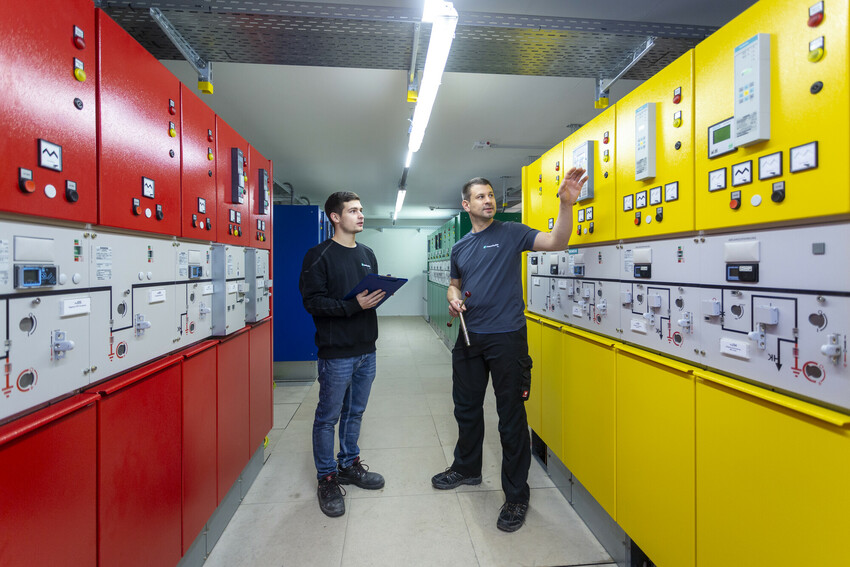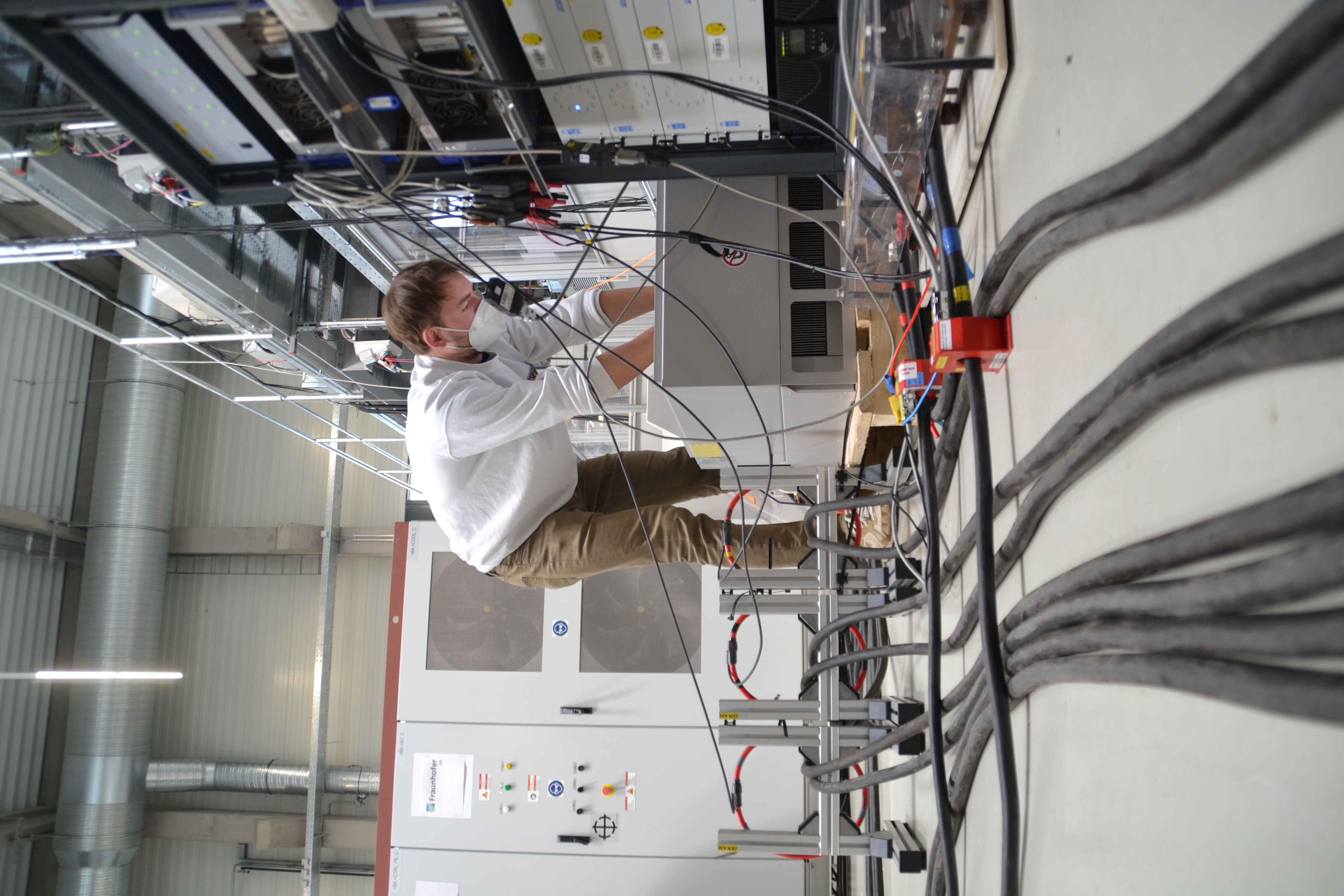| Duration: | 08/2017 - 07/2021 |
| Contracting Authority/ Sponsors: | Forschungszentrum Jülich; TransnetBW GmbH |
| Project Partners: | KACO new energy GmbH; TransnetBW GmbH; Institut für Feuerungs- und Kraftwerkstechnik Universität Stuttgart; DEIF; CRONIMET Mining Power Solutions |
| Project Focus: |
VerbundnetzStabil – Stable Power System Behavior with Converter-Based Generation


The "Verbundnetz Stabil" project is about maintaining the stability of interconnected systems with high penetration of inverter-based resources. With the progressive expansion of renewable energies and the integration of electrical storage systems, the technological foundations of grid technology are undergoing fundamental change. The objectives of the project are the development, implementation and testing of new approaches for the control of grid-forming converters with a view to the current and future requirements for stable and robust interconnected systems.
The focus is on power-converter technology and in particular on the development of specific control algorithms for grid-forming converters as well as their testing with regard to the stabilizing effect in the interconnected grid. The aim is to prove that reliable grid operation is possible with very high penetration of converters.
The stability-relevant properties of various generation technologies are analyzed based on today’s situation, characterized by behavior of the synchronous generator and grid-following converters. From this, the project partners derive relevant electrical requirements for converters in future power grids. The core objective of the project is the development of novel, grid-forming control methods. Their effect on stable system behavior in an inverter-based interconnected system will be analyzed both by simulation and by means of practical tests in order to derive meaningful functional specifications for next-generation grid-stabilizing converters. For this purpose, the newly developed control approaches are implemented on an inverter platform.
Lab-based testing will be carried out on a megawatt scale. For this purpose, crucial grid situations are downscaled from a gigawatt scale to a megawatt scale, which allows the validation of the impact of grid-forming converters on the grid stability. Based on the measurement results, corresponding inverter models are validated, which in turn forms the basis for transferring the findings to the interconnected system behavior by means of simulation calculations.
The following scientific and technical objectives are pursued within the framework of the project:
Requirements for a stable converter-dominated interconnected system
This included the formulation of the requirements that are to be applied on generators and consumers in converter-dominated grids to ensure a stable interconnected grid operation. For this purpose, a specification for the control behavior of converters on the grid is to be created.
Fraunhofer ISE is pursuing the goal of identifying the stability aspects of generators and loads of different technologies and deriving requirements for the behavior of converters.
Development of control strategies for grid-forming converters
A converter control system is being developed which - in contrast to state-of-the-art current-controlled converters- uses a voltage-controlled approach. On this basis, the project teams aim to develop, implement and test new algorithms for grid-forming converters that provide all necessary properties to replace today’s must-run power plants.
Modeling and simulation
Suitable dynamic modeling of a converter-dominated interconnected grid is the key to enable a meaningful stability analysis. Detailed generator and load models will be created in order to derive aggregated distribution grid models for the purpose of interconnected grid simulation. The models created will be validated on the basis of the measurements.
Testing and validation
An important project goal is the validation of the developed and implemented control strategies and the established models. This will be done by applying and analyzing the new control strategies in a microgrid in the laboratory and in the real power grid. From these testing experiences, general testing procedures for grid-forming converters will be derived.
In the Multi-Megawatt Lab in Freiburg, a microgrid is being set up, with which various interconnected grid situations (e. g. different proportions of generation from synchronous generators, faults, etc.) can be simulated and researched in the laboratory. Furthermore, Fraunhofer ISE tests the operation of grid-forming converters on a real power grid connection point to demonstrate the transferability of the developed solutions to reality.